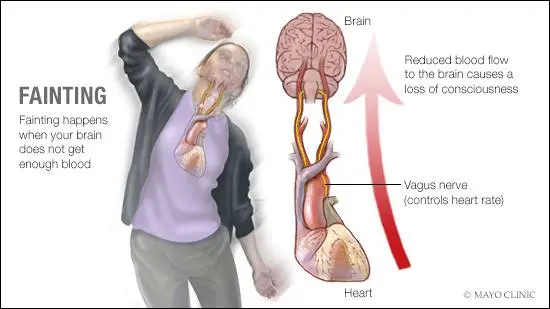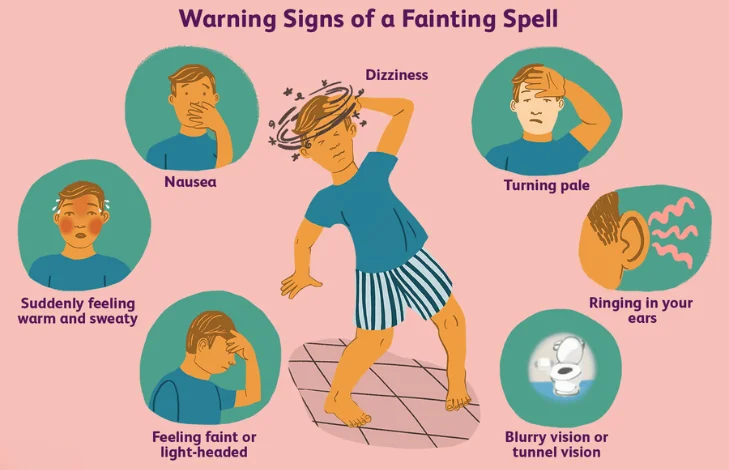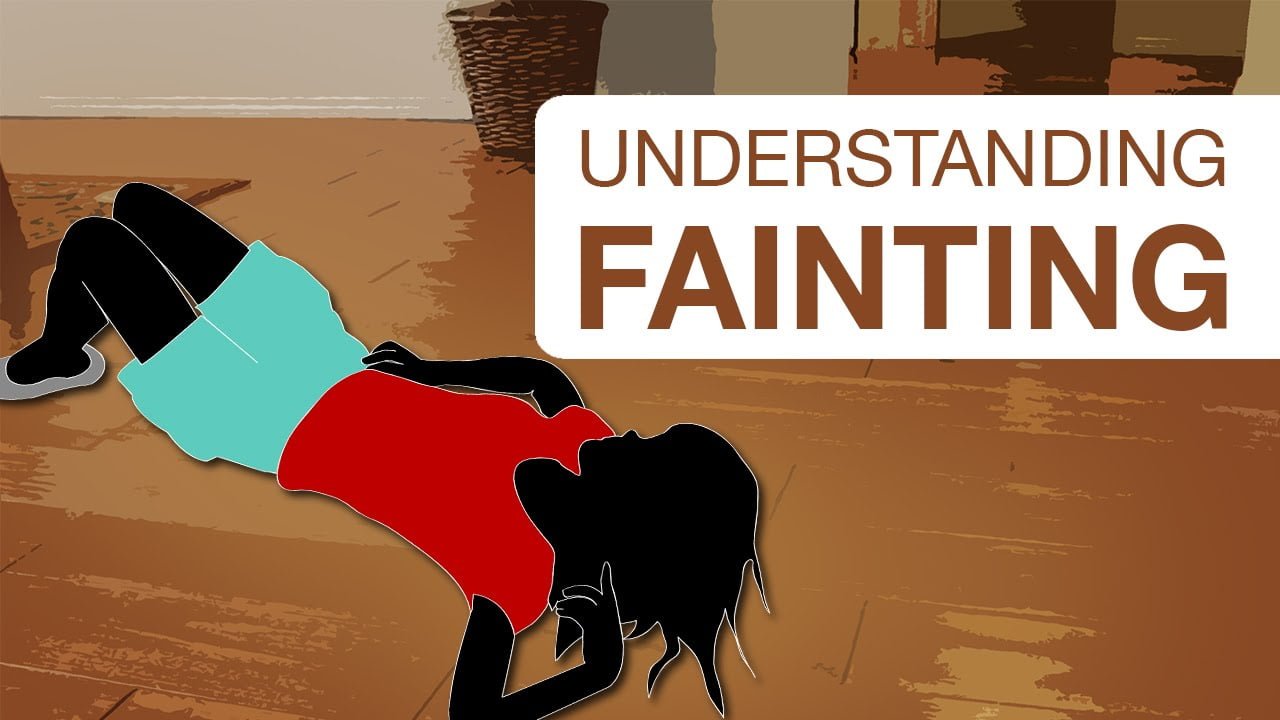Understanding Fainting Causes, Symptoms, and Treatment. Also called syncope, fainting is a temporary loss of consciousness caused by insufficient blood flow to the brain. Know what triggers them, identify their signs and learn their management/treatment protocols to manage and prevent such situations.
Fainting Causes

Faintness has many causes, each with distinct triggers and mechanisms. One must understand these to identify possible risk factors and put preventive measures in place. We will now look at some of the common Fainting causes:
Neurocardiogenic Syncope:
This form of fainting occurs frequently and can be linked to emotions pain or dehydration or standing up suddenly. It will manifest with an abrupt decrease in blood pressure and heart rate leading to transient unconsciousness.
Orthostatic Hypotension
This refers to the falling down suddenly of blood pressure that happens when someone changes positions from lying or sitting position to standing. This sudden reduction in brain’s blood supply may cause syncope especially among elderly people or those with certain diseases.
Heart Problems
Sometimes syncope can be a symptom indicative for cardiac disorders like arrhythmias (abnormal heart rhythms), structural heart defects and coronary artery disease. These conditions interrupt normal blood stream and oxygen delivery towards brain leading to loss of consciousness occasionally.
Neurological Conditions:
Fainting results from some neurological disorders that impair awareness and blood pressure control, including epilepsy, cerebrovascular accidents, and transient ischemic attacks (TIAs).
Hyperventilation:
Hyperventilation syndrome can cause someone to faint through rapid or too much breathing patterns attributed to anxiety or panic attacks. This can lead to low concentration of carbon dioxide in the blood hence affecting normal physiological processes thus culminating into fainting.
By keeping these causes in mind, individuals may be able to tell when they are most likely to have an attack, and take measures to prevent syncope events from occurring.
Recognizing the Signs and Symptoms

It is very crucial therefore to know beforehand the signs that precede syncope so as to respond promptly thereby minimizing any harm. However, specific signs differ depending on the cause of that particular case although there are common warning signs such as;
Lightheadedness or Dizziness:
Feeling dizzy or lightheadedness usually precedes fainting as an early symptom. This may be accompanied by distorted images or unsteadiness.
Nausea and Sweating:
There could be excessive perspiration that may lead to nausea followed by fainting among some people. This is especially experienced when heat and stress are felt.
Paleness and Weakness:
Reduced circulation of blood can be shown by a sudden white face, fatigue or lassitude of body associated with weakness.
Changes in Heart Rate and Breathing
There are cases when one faints after experiencing changes in breathing patterns or heart rate, for example rapid heart palpitations or shallow breaths. By spotting such signs it gives room for an individual to take appropriate measures like sitting down or lying so as to protect oneself from falling and later seeking medical help if need be.
Treatment and Management Strategies
Combining prevention, life style changes and medication is the most effective way to manage fainting. The following tips are worth considering;
Sit or Lie Down:
It is important that you fall down on either your backside or lay face up in order not to get any injuries when you feel as though you are about to faint somewhere. In addition, raising your legs helps enhance brain blood supply.
Stay Hydrated:
Avoid being dehydrated because this tended to increase the likelihood of syncope episodes. It is important to ensure that you drink enough water especially in hot weather and during physical exercises.
Avoid Triggers:
Identify possible precipitating factors such as getting up too fast, standing motionlessly for long periods, high temperatures etc.
Compression Stockings Should Be Worn:
Wearing compression stockings may improve blood flow and reduce the risk of collapsing for people who are vulnerable to orthostatic hypotension.
Medication:
In some instances, medicine might be prescribed in order to control any other illnesses that support fainting, e.g. beta-blockers for heart rhythm disorders or antiepileptic drugs for seizures.
Cardiac Evaluation:
Frequent fainting or its association with alarming signs like pain in the chest, shortness of breath and palpitations may make it necessary to do a comprehensive cardiac evaluation so as to exclude possible heart problems.
Conclusion: Empowering Individuals with Knowledge
It is often terrifying when someone feels as though he or she is about to pass out; however understanding and mindfulness can enable them take significant measures towards managing and preventing it. Understanding why it happens, recognizing symptoms, and using appropriate therapies can restore self-assurance about one’s wellbeing.
(FAQs) About Fainting
What are the General Causes of Fainting?
Among these triggers are vasovagal syncope (due to emotional strain, ache, or dryness), orthostatic hypotension (this is when blood pressure drops suddenly upon standing up), heart problems, nervous system conditions and over-breathing.
How do I know if Someone is About to Faint?
Signs of imminent fainting include feeling woozy or light-headed, vomiting, sweating profusely, looking deathly pale, feeling weak, a changing heart beat as well as changes in how one breathes.
What Should I do if I Feel Like I’m Going to Pass Out?
The critical thing is that you must either sit down or lie flat immediately once dizziness sets in so as not to fall down which lessens the likelihood of getting injured. Raising your legs helps improve blood circulation into your brain hence reducing time spent during a swoon.
How can I Stop Fainting Fits Happening?
Guidelines on how to stay safe from collapsing include maintaining hydration levels by drinking enough water and avoiding factors like sudden jerks and extreme weather while at it. Wearing compression stockings among individuals who frequently suffer from orthostatic hypotension could be useful. Also seeking medical attention will help control the underlying factors responsible for their episodes.
When Should I and How Often Get Medical Help if I Faint?
Frequent fainting, chest pain, shortness of breath or irregular heartbeat may indicate underlying heart problems that call for medical evaluation. A broad-based cardiac assessment may be needed to rule out serious conditions.
Can Medications Help Stop Episodes of Fainting?
Beta-blockers are drugs used for managing arrhythmia while antiepileptic medicines are recommended for seizure control in some situations. However, only stick on taking medication as advised by doctors.
What can I do to Restore my Confidence after Several Incidents of Fainting?
This will require understanding the reasons behind it, noting any warning signs and adopting a suitable strategy for treatment that will enable them regain control over their well-being and self-assurance. Education and knowledge play a crucial role in the successful management and prevention of syncope.
Comprehensive Guide to Understanding Narcissistic Personality Disorder (NPD)
10 Powerful Ways to Enhance Sex and Pleasure
